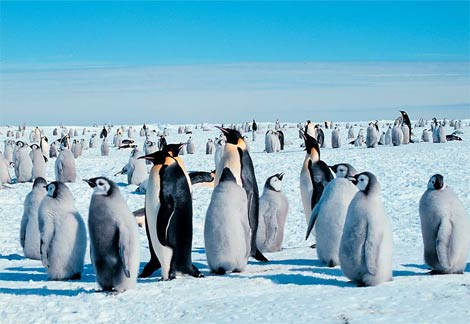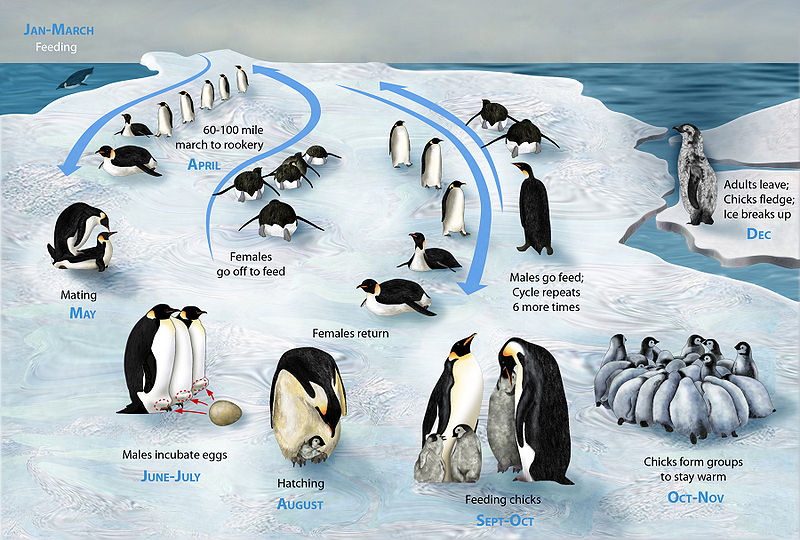For snow-starved Singaporeans, we certainly embrace the chill of winter with delight but imagine spending it in Antarctica where it is continuously dark and temperatures drop to minus 17 degrees centigrade. That’s the kind of conditions which the emperor penguin, Aptenodytes forsteri, the largest penguin in the world, habitat in. About 3 feet tall and weighing up to 100 pounds, these penguins have to grapple with conditions where there is no food, no water and they’ll not see the sun again in four months. In conditions as such, what truly fascinates me is how the Emperor Penguin manages to incubate their eggs. Check out this clip of the amazing creature: http://www.youtube.com/watch?v=MfstYSUscBc
The job is left to the Father Emperor Penguin while the female returns to the sea to forage. The egg sits on top of the father’s feet and under his brood flap which is a loose piece of skin that covers the egg and holds it next to the father’s body–kind of like an upside down kangaroo pouch. During this incubation period, the male emperor penguins stand in a tight huddle for about 2-3 months straight and they do not eat anything, which explains how they are able to lose half of their body weight. Huddling close together enables them to conserve half of the body heat which they would otherwise lose without other penguins around. To make sure that their eggs dont freeze, the fathers also reach down to turn their eggs over. The diagram provides a clear illustration of the splitting of responsibilites between the male and the female, as well as the time frame of incubation and feeding.
When the female penguin returns after 2 months, they bring with them food for the now hatched chicks while the males now leave eagerly for their own hatching session at the sea, leaving the care of the young to the mothers. The baby emperor penguins are sheltered in their mother’s brood pouch for about two months and if it falls out of the spot, it would freeze to death in just 2 minutes (Yes, that’s how cold it is!) In January, when the sea-ice begins to break out, the chicks are then able to head out independently for the open sea. Since the emperor penguins breed in the winter next to the Antarctic Coast, during which, food sources may be depleted, dispersed and under sea ice, they have amazing diving capabilities other than any bird!
Acknowledgements
“Emperor Penguins” by Catherine D. Hughes. URL: http://kids.nationalgeographic.com/Animals/CreatureFeature/Emperor-penguin (Accessed on 8 April 2010).
“Emperor Penguin” by Wikipedia, 8 April 2010. URL: http://en.wikipedia.org/wiki/Emperor_penguin (Accessed on 8 April 2010).
“Emperor Penguins- The Greatest Wildlife Show on Earth- BBC,” by BBCEarth YouTube Channel, 11 December 2009. URL: http://www.youtube.com/watch?v=MfstYSUscBc (accessed on 8 April 2010).
Kooyman, G. L. & Kooyman, T.G., 1995. Diving Behaviour of Emperor Penguins Nurturing Chicks at Coulman Island, Antarctica. The Condor, 97(2): 536-549.


